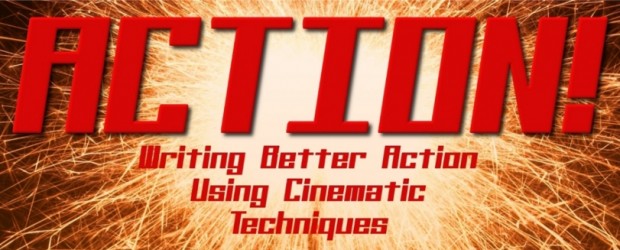Giele whipped the pan out, up, and across Rarik’s face. It rang with the impact of iron on bone as Rarik flew backward into the middle of the aisle. Giele whirled around as the Dwarf shouted and fired his pistol. The bullet hit the pan with such force it nearly twisted the handle from Giele’s grasp. His hand went numb from the vibration of the metal. He glanced down and saw the bullet embedded in the pan’s bottom. God’s Blood! It had almost burst through the thick iron and into his chest.The one-eyed Dwarf aimed again, pistol raised up toward Giele’s head. He hurled the pan at the Dwarf. He tried to duck, but the iron edge caught him behind his right ear. He went down as quickly as if Giele had shot him.Giele yanked his knife from the scabbard strapped against the small of his back just as Cianid brought a jar of preserves down on the other Elf’s head. His eyes rolled back and he dropped, bleeding blood and raspberries.“Nicely done.” Giele sheathed the blade again.“Idiot. I had things under control until you got involved. Does trouble follow you everywhere or do you have to seek it out?”
The Stunt is the basic building block of the action scene. Think of a Stunt as a single camera shot or closely-related shots in film. All action scenes, even the most complex, can be broken down into a series of Stunts. A Stunt is either a single action undertaken by a character, or a brief flurry of related actions. There are four Stunts in the example at the beginning of this section. They are:
1. Giele hits Rarik with the pan.
2. The Dwarf fires his gun at Giele.
3. Giele throws the pan at the Dwarf.
4. Cianid hits the Elf with a jelly jar.
Stunts have several qualities. They are generally brief, often lasting only a single sentence. If the Stunt has several actions relating to it, it could last as much as a paragraph, but that is the longest it should go. If you are writing a Stunt and it seems like it should be broken into more than one paragraph, you are writing multiple Stunts. Think like a director. If you would yell “Cut!” after an action to reset for the next shot, that’s a completed Stunt. A Stunt can be described at its simplest in a single sentence, like the examples above: Character does something.
Stunts always occur within a single set piece. Characters performing Stunts don’t have to stay rooted to one spot, but if they move significantly within the set piece, it’s probably multiple Stunts. Because Stunts are brief in real time, there isn’t much room for dialogue, lengthy description, or internal monologuing.
One of the most important aspects of a Stunt is that it and of itself will never resolve a main conflict. The equivalent would be spending two hundred pages setting everything up, only to have your Hero walk into a room, draw his pistol, and fatally shoot the main Opponent. Can that happen? Yes. Is it anticlimactic and a poor way to resolve the book? Most probably. A Stunt can be part of a larger sequence that resolves a main conflict (more on that later) but single, solitary Stunts have different uses for a plot.
A Stunt can be used as an effective means to introduce either a new character or a new subplot. These are when isolated acts (of violence, remember) have long-reaching consequences for the characters of the story. Luke Skywalker is about to be killed by a Tusken Raider on Tatooine when Ben Kenobi’s arrival scares off the Sand Person. A young boy watches helpless as his parents were gunned down by a mugger in an alley. That boy grows up to become Batman. Both of these events were simple, single Stunts that led to important plot points.
Isolated Stunts can also work to develop characters further. In Raiders of the Lost Ark, a swordsman confronts Indiana Jones, swinging his weapon in a vicious, threatening display. Indy, in turn, pulls out his gun and shoots the man. On the surface, this is a simple, entertaining moment in an entertaining film. It’s memorable, which is a key aspect of isolated Stunts both in film and in fiction. It also helps to define Indy’s character better. The audience instinctively understands that he’s not going to take the hard path if a simpler opportunity presents itself. Throughout the series of Indiana Jones movies, this personality trait is repeated time and time again, where Indy applies more direct methods to solving problems than working out complicated solutions.
The most important aspect of a Stunt is its inclusion in more complex series of actions within a scene, and that is what is called the Engagement.
